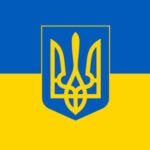
Iron (Fe-Content)
52 431 000 metr. t


52 431 000 metr. t

489 200 metr. t

536 metr. t

652 300 metr. t

27 000 metr. t

19 757 metr. t.

2 317 723 metr. t

22 153 000 metr. t
The mining industry in Ukraine possesses a diverse and rich array of mineral resources. The country has abundant reserves of coal, iron ore, natural gas, manganese, salt, oil, graphite, sulfur, kaolin, titanium, nickel, magnesium, mercury and uranium.
Due to the unique raw material base of iron and manganese ores, Ukraine is one of the countries with the most developed ferrous metallurgy in the world. The mining and steel industry in Ukraine is facing difficult times after Russia’s invasion in February 2022. The industry is working in “survival mode,” but also there are still prospects for the sector. After the invasion of Russia on the territory of Ukraine, domestic steel companies reduced the export of products to a minimum due to the blockade of seaports. At the beginning of 2023, the situation stabilised. Ukrainian mining companies increased the export of iron ore by 31% in February 2023 compared to January 2023, amounting to 1.215 million tons.
Additionally, Ukraine is a significant producer of minerals such as iron ore, which is a key component of steel, and coal, which is used in the production of electricity and steelmaking. The industry’s contribution to the rebuilding efforts will depend on a variety of factors, including the level of damage sustained by mining and metallurgical facilities during the war, the availability of financing for reconstruction, and the prioritization of reconstruction efforts by the Ukrainian government.
Ukraine is aiming to become a supplier of critical minerals following the war and subsequent disruptions caused by the Russian Federation’s invasion of Ukraine and the ensuing economic sanctions on Russia. The disruptions have caused severe impacts on global markets for critical raw materials, highlighting the need for critical materials security.
Ukraine has potential reserves of various critical minerals, including rare earth elements, titanium, and nickel, among others.
The country’s potential as a supplier of critical minerals has led to the European Union and Ukraine signed a memorandum of understanding on critical raw materials and batteries.
Lithium
Ukraine possesses one of the largest lithium deposits in Europe with proven reserves and contingent resources. There are two lithium fields and two explored prospective
areas, as well as a number of promising accumulations. One lithium field is licensed. Lithium is currently not extracted in Ukraine.
Titanium
Ukraine is among the top ten countries in the world in terms of proven reserves of titanium ores and provides more than 6% of their global production. 27 discoveries and more than 30 prospective areas have been explored. The main titanium-containing mineral is ilmenite.
Currently, only placer deposits are being developed, which are about 10% of all proven reserves. The rest is contained in indigenous deposits. Objects prepared for auction are placer deposits. Titanium and its alloys are used in aviation and missile technology, shipbuilding, machine building, food, medical
industry and non-ferrous metallurgy.
Nickel, cobalt, chromium, copper, molybdenum
Ukraine possesses considerable deposits of non-ferrous metals and imports significant volumes of those for its own needs.
Explored fields and prospective areas are complex and mainly concentrated within the Ukrainian Crystalline Belt.
The production of these minerals is either not carried out or is very limited.
The estimated reserves are (thousand tons): nickel – 215, cobalt – 8.8, chromium oxide – 453; prospective resources (thousand tons): chromium oxide – 3120, copper – 95.
Tantalum, niobium, beryllium, zirconium, scandium
Within the Ukrainian Shield, there were discovered complex fields and prospective areas of rare and rare earth metals. Zirconium and scandium are concentrated in placer and indigenous deposits in significant quantities, however, their extraction is not carried out.
Reserves of tantalum pentoxide, niobium, and beryllium a registered within six deposits, production is carried out within the Malyshevske and Vovchanske fields. Both licences are offered for exploration and can be considered as one investment project.
Gold
Ukraine has a gold ore reserve of 3000 tons and may take one of the leading places in gold mining in Europe.
Seven fields have been discovered, five concession licenses have been issued, and production is currently carried out at Muzhiyivske field. According to experts, there are 55 tonnes of gold and 1 million tonnes of zinc and lead in the Muzhievo deposit. The deposit is currently being developed by Avellana Gold.
New 5-year licenses for exploration and pilot development are open for e-auctions.